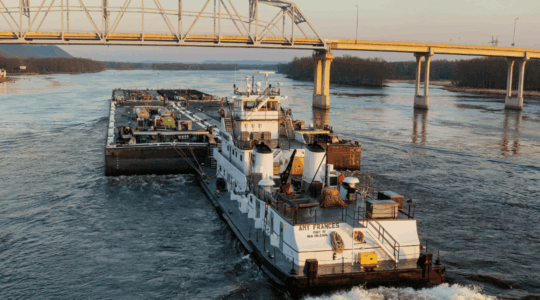Marine
Inland Marine Insurance: The Underrated Workhorse
Why This Coverage Is Critical for the Maritime Industry
April 16, 2025
When most people hear “inland marine insurance,” they think of a policy that insures tools on construction sites or goods in transit across land. However, in the marine industry—where equipment frequently moves between shipyards, docks, vessels, and barges, and where downtime can cost thousands of dollars a day—this often-overlooked coverage is one of the most valuable components of a robust risk management program.
Inland Marine Insurance Differs from Standard Property Coverage
From shipyards and marine contractors to boat builders and marinas, inland marine insurance protects property that standard property policies often exclude. This includes cranes, boat lifts, welding machines, generators, travelifts, trailers, molds, floating dry docks, and other related equipment. These assets are critical to daily operations and are frequently exposed to harsh environments, water damage, and high mobility risks.
Inland Marine Insurance Enhancements for Consideration
A key consideration for marine businesses is the need to extend inland marine coverage to include equipment that becomes waterborne or goes over the side. Standard policies often exclude this exposure, but with the proper endorsements, losses involving over-the-side operations—such as dockside welding rigs, sonar systems, dive gear, and hydraulic tools—can be protected. Insurers may require additional risk controls, such as operational protocols, tethering procedures, or documented retrieval plans, to offer this extension.
Another essential enhancement is business income interruption coverage. For example, if a marina’s only travelift is damaged and unable to operate, haul-outs stop, and income dries up. Inland marine policies can be structured to include business income protection tied to equipment breakdown, ensuring financial continuity while repairs or replacements are made.
Risk Management’s Role in Inland Marine Policy Performance
Risk management also plays a crucial role in the performance of an inland marine policy. Proper maintenance schedules, documented inspections, and certified equipment operators not only reduce the chance of loss but can also improve insurance terms and reduce premiums. OSHA-compliant daily inspection checklists and preventive maintenance logs are no longer just a best practice—many underwriters expect them.
Technology is rapidly becoming a key player in inland marine risk control. Many marine operations now use mobile apps to record daily equipment inspections, complete with photo documentation and time-stamped entries. These tools provide a verifiable maintenance history, improve operational awareness, and provide robust documentation in case of a claim. GPS tracking and telematics systems are also being installed on high-value mobile equipment to monitor usage, location, and service needs—preventing theft and streamlining maintenance.
Environmental concerns are another critical consideration. Equipment like generators and hydraulic lifts often contain fuels or oils. If damaged or lost overboard, these machines can trigger environmental liability exposures. Inland marine policies can be endorsed to include pollution clean-up coverage and spill response costs. Employers are also encouraged to train crews in containment procedures and maintain spill kits near marine job sites.
The Importance of Clarifying Equipment Ownership
For marine contractors, it’s especially important to clearly identify equipment ownership and responsibilities for loss or damage that may occur during shared operations. Subcontractors should carry their inland marine insurance, and contracts should assign liability for tools and gear. For complex or high-value builds, project-specific inland marine policies may be the best solution.
One real-world example of an inland marine loss comes from a Gulf Coast marina that experienced a six-figure loss when its mobile lift tipped during a boat removal. Because it wasn’t listed under their property policy and no inland marine coverage was in place, they had to replace the lift out-of-pocket—and lost weeks of income due to interrupted operations. If the right policy with waterborne and business income endorsements had been in place, both the equipment and income could have been protected.
An Essential Safeguard for Maritime Businesses
Ultimately, inland marine insurance protects much more than tools—it protects your business’s ability to operate. When paired with sound risk management strategies, proper endorsements, and the use of technology to track inspections and maintenance, it becomes an essential safeguard for shipyards, marinas, builders, and contractors alike.
If your policy doesn’t align with how your business operates—on land, over the side, and on the water—it may be time for a review. Your tools and equipment move constantly. Your insurance coverage should keep up.
Learn more about Hylant’s marine practice here.
Related Reading: Navigating the Changing Seas: Adapting to Regulatory Changes in the Maritime Industry
The above information does not constitute advice. Always contact your insurance broker or trusted advisor for insurance-related questions.


